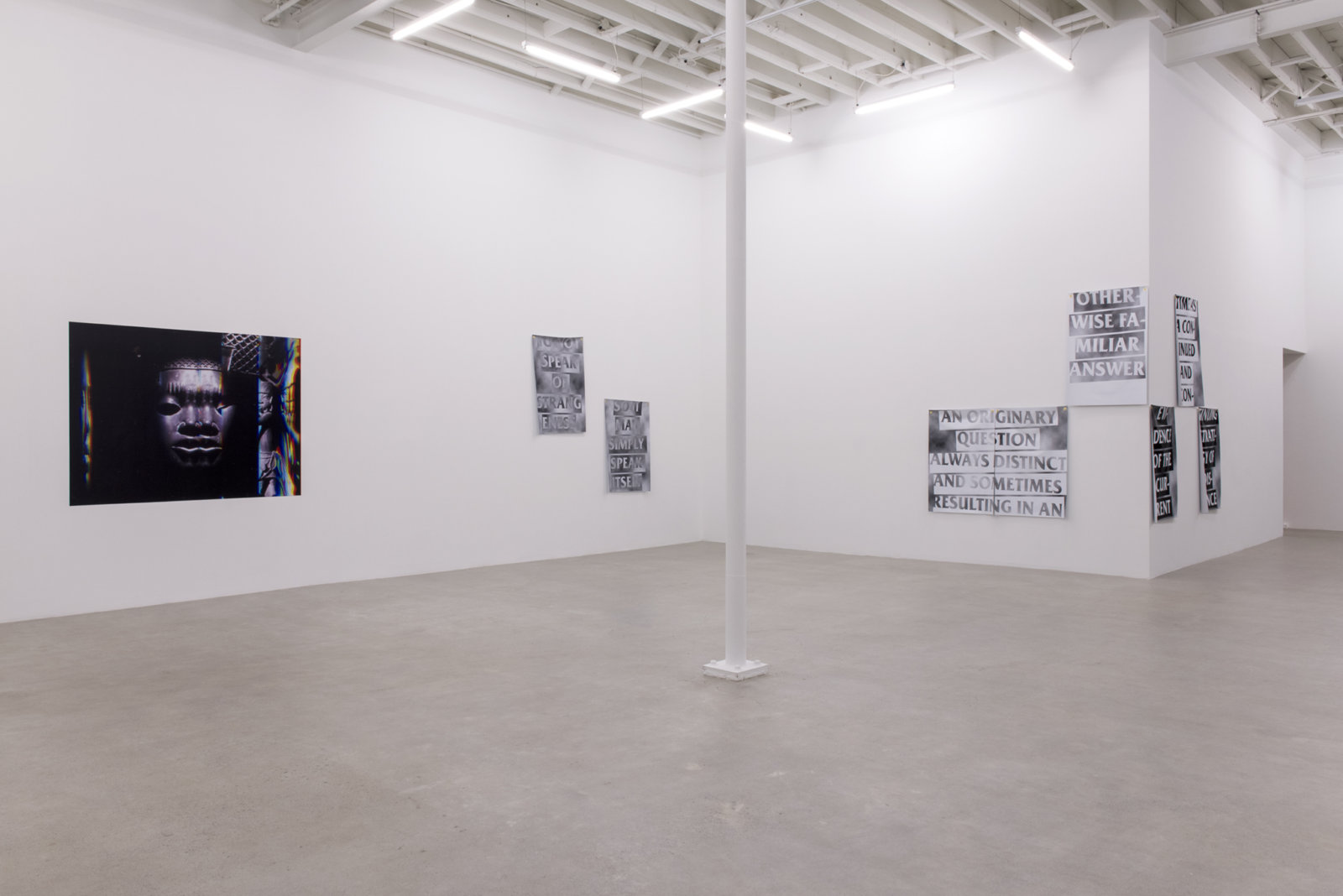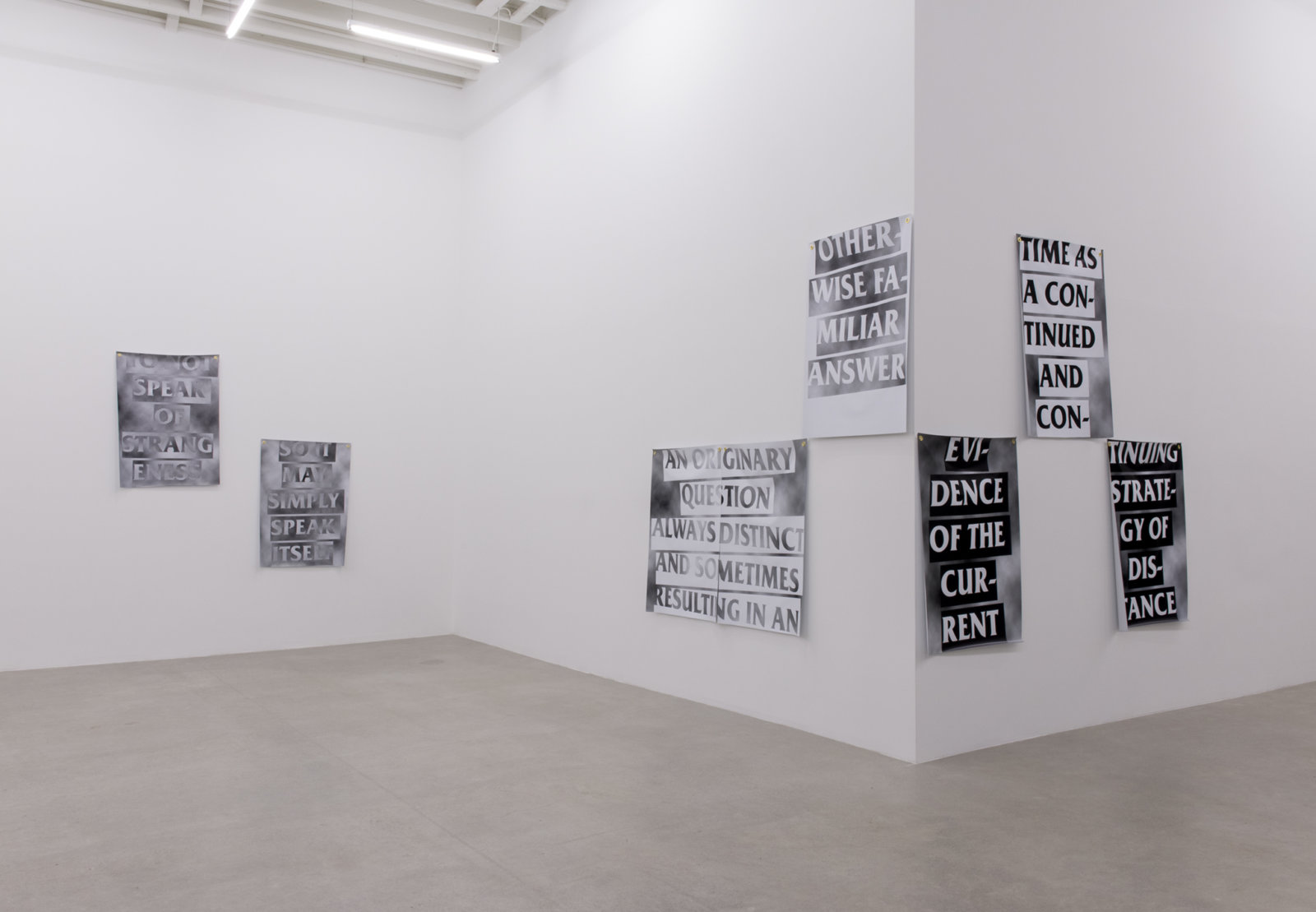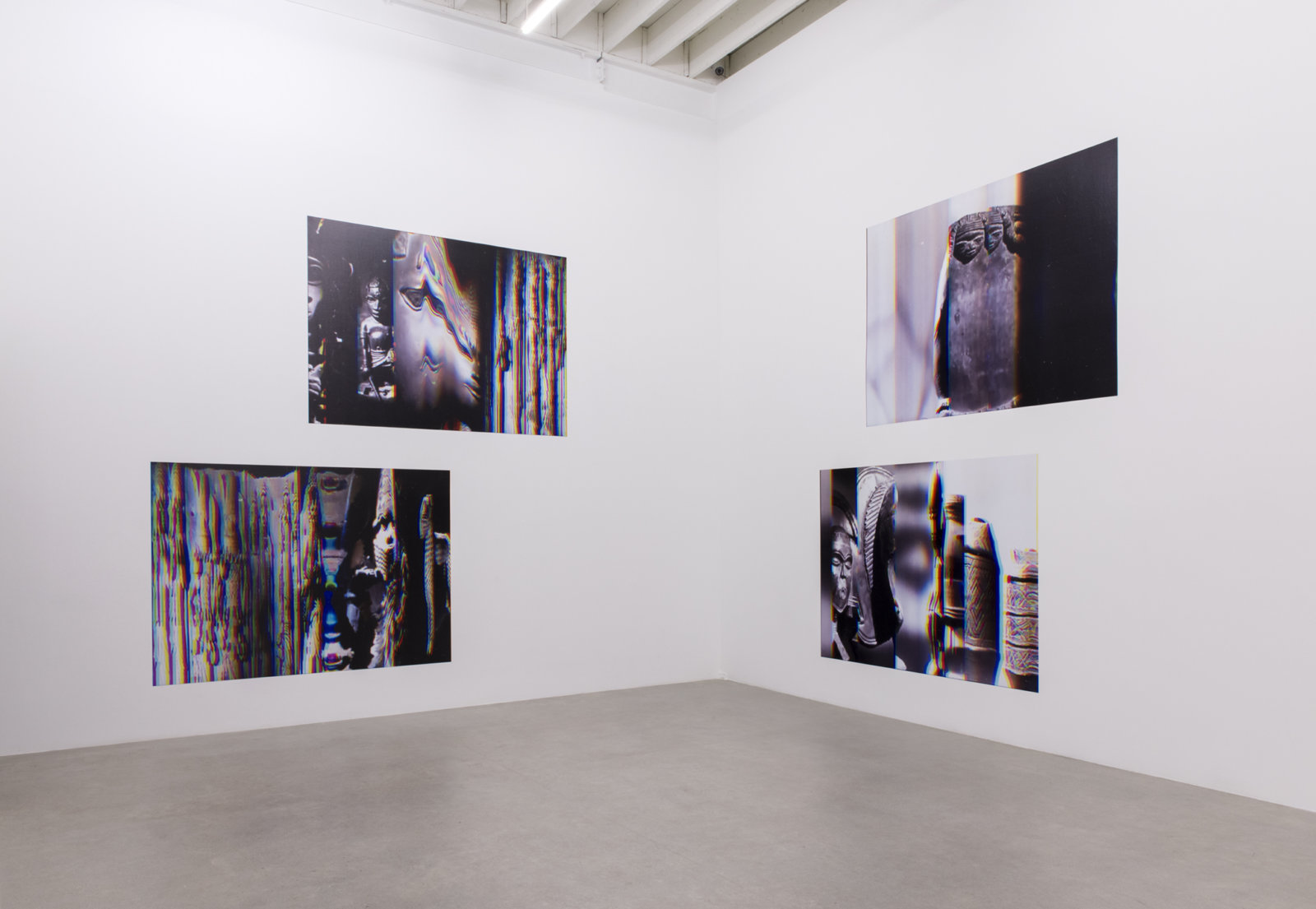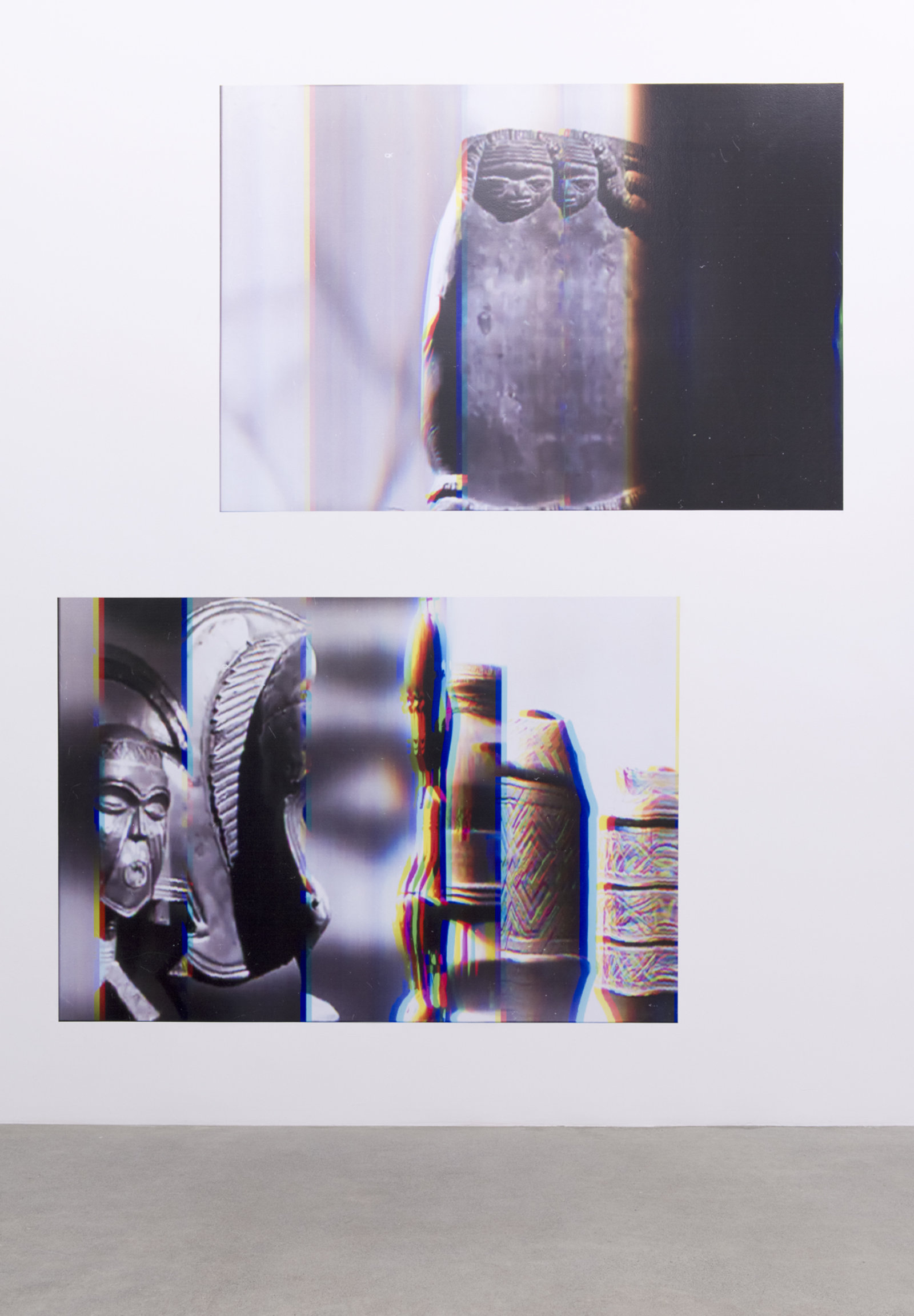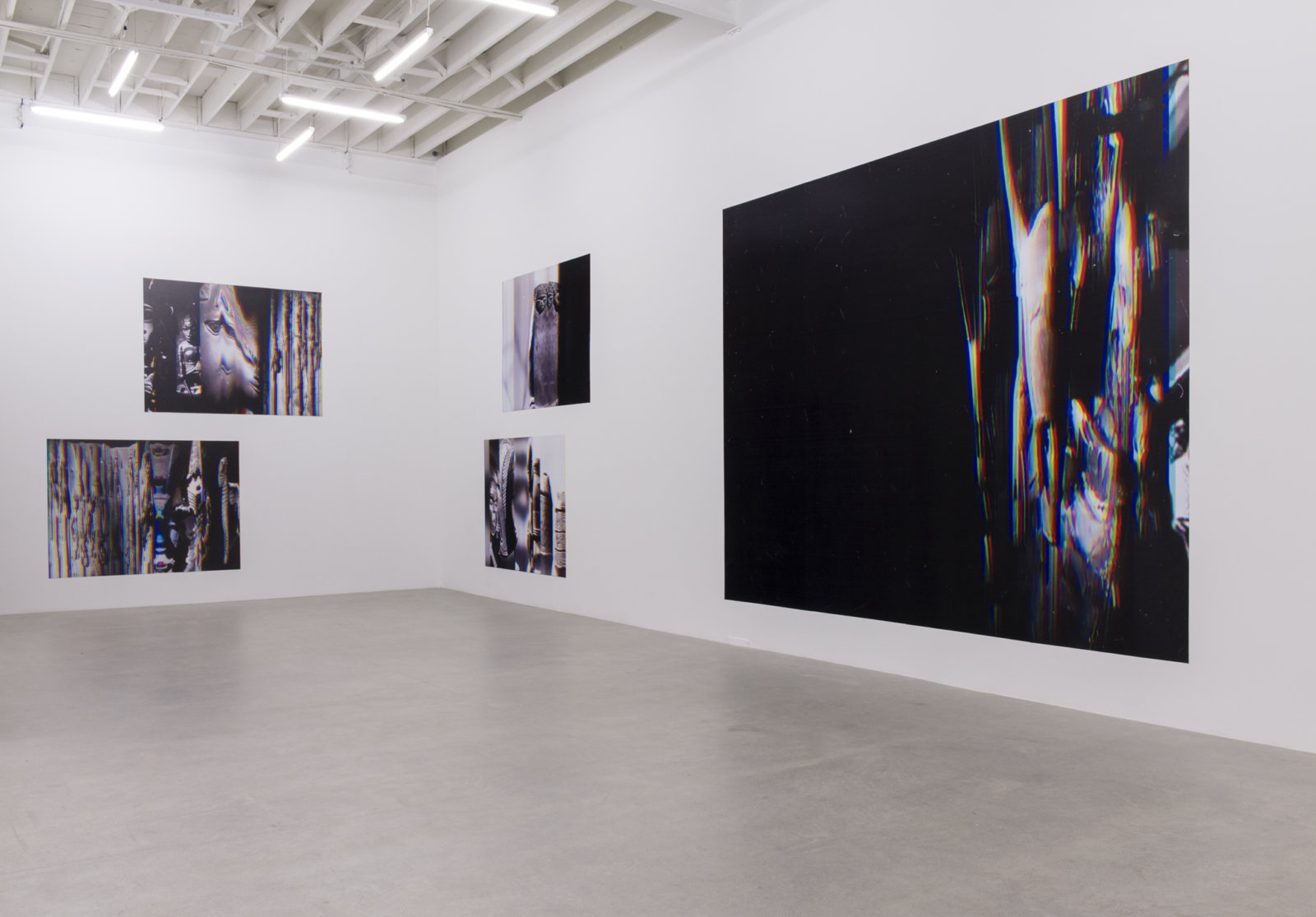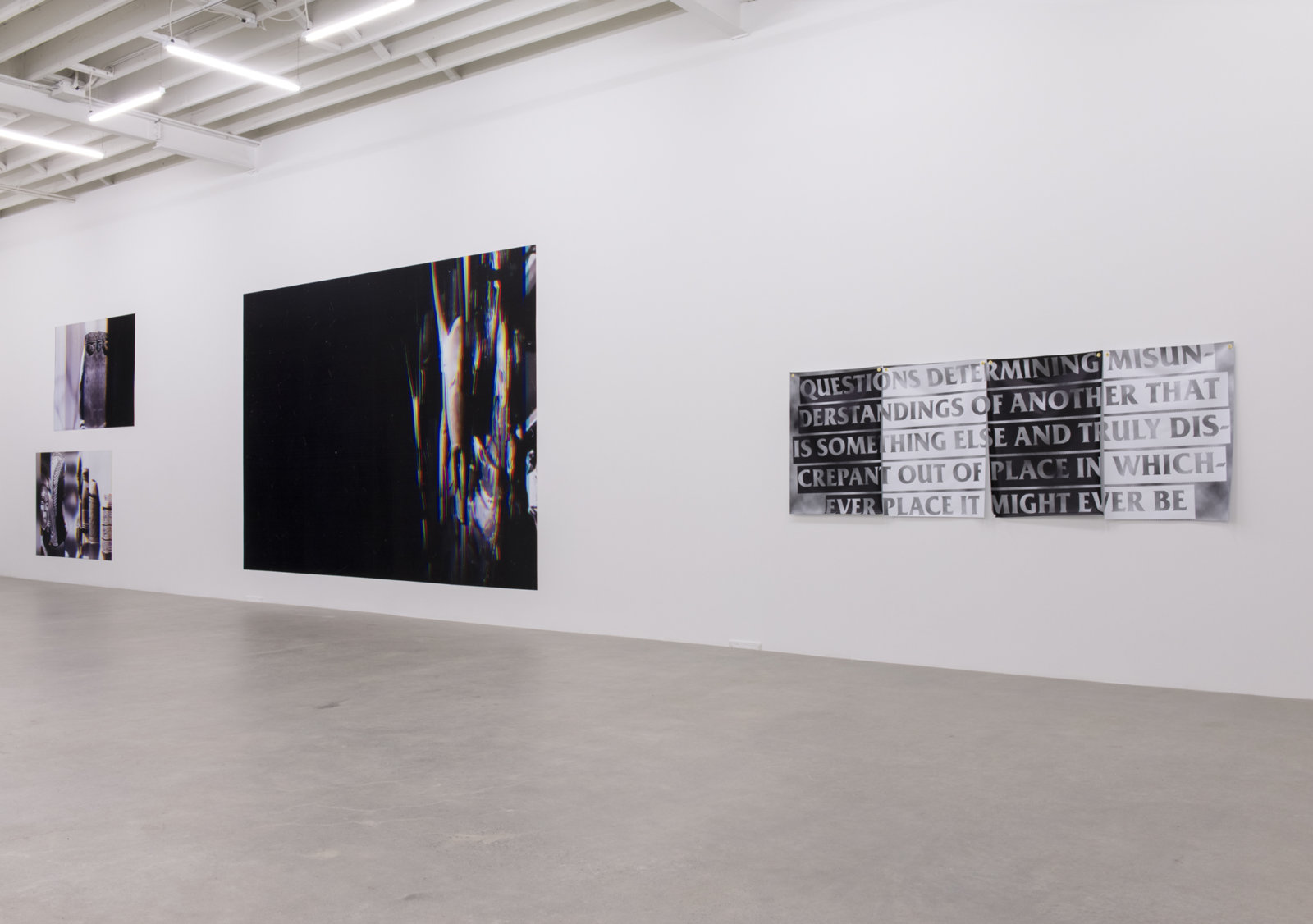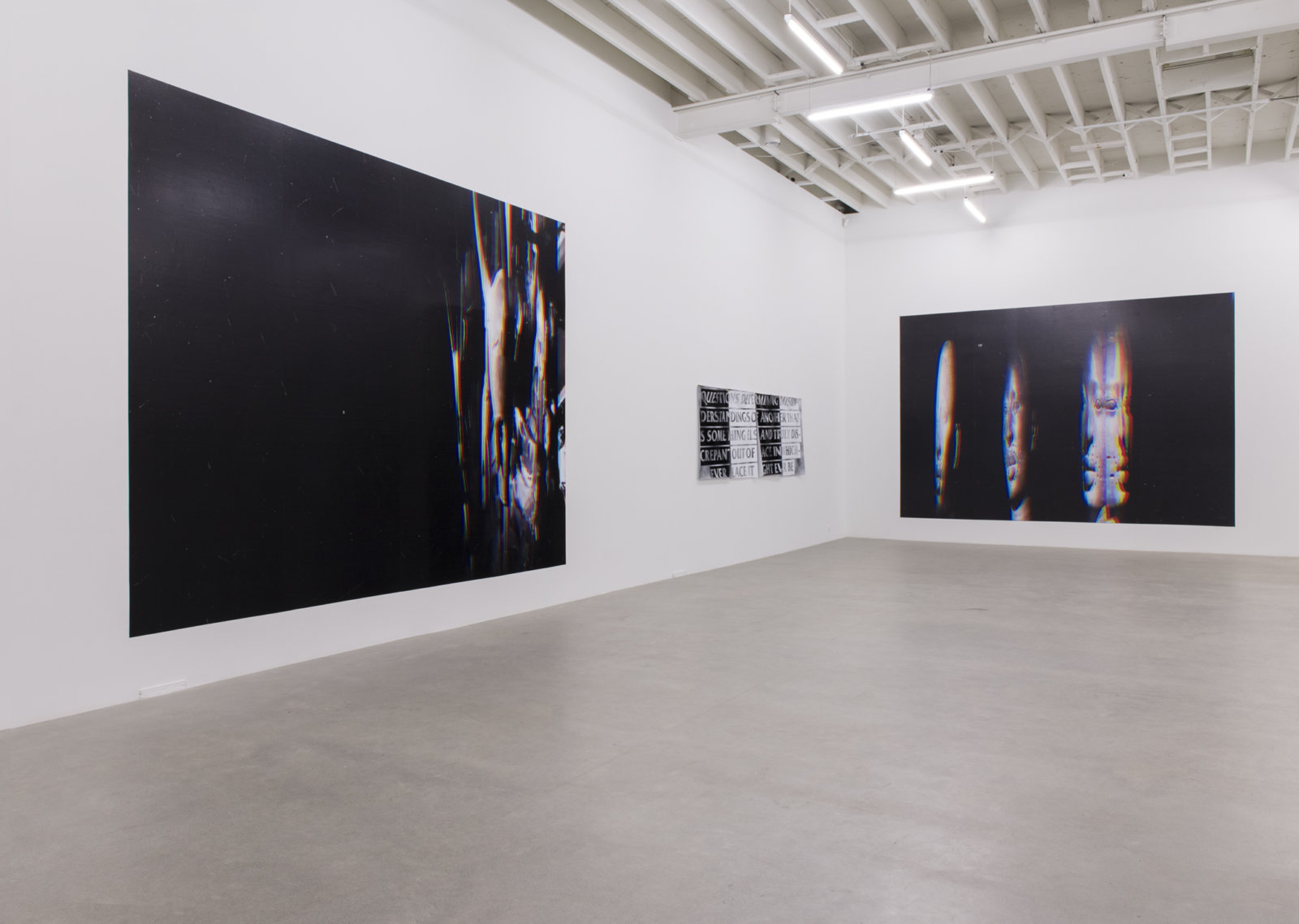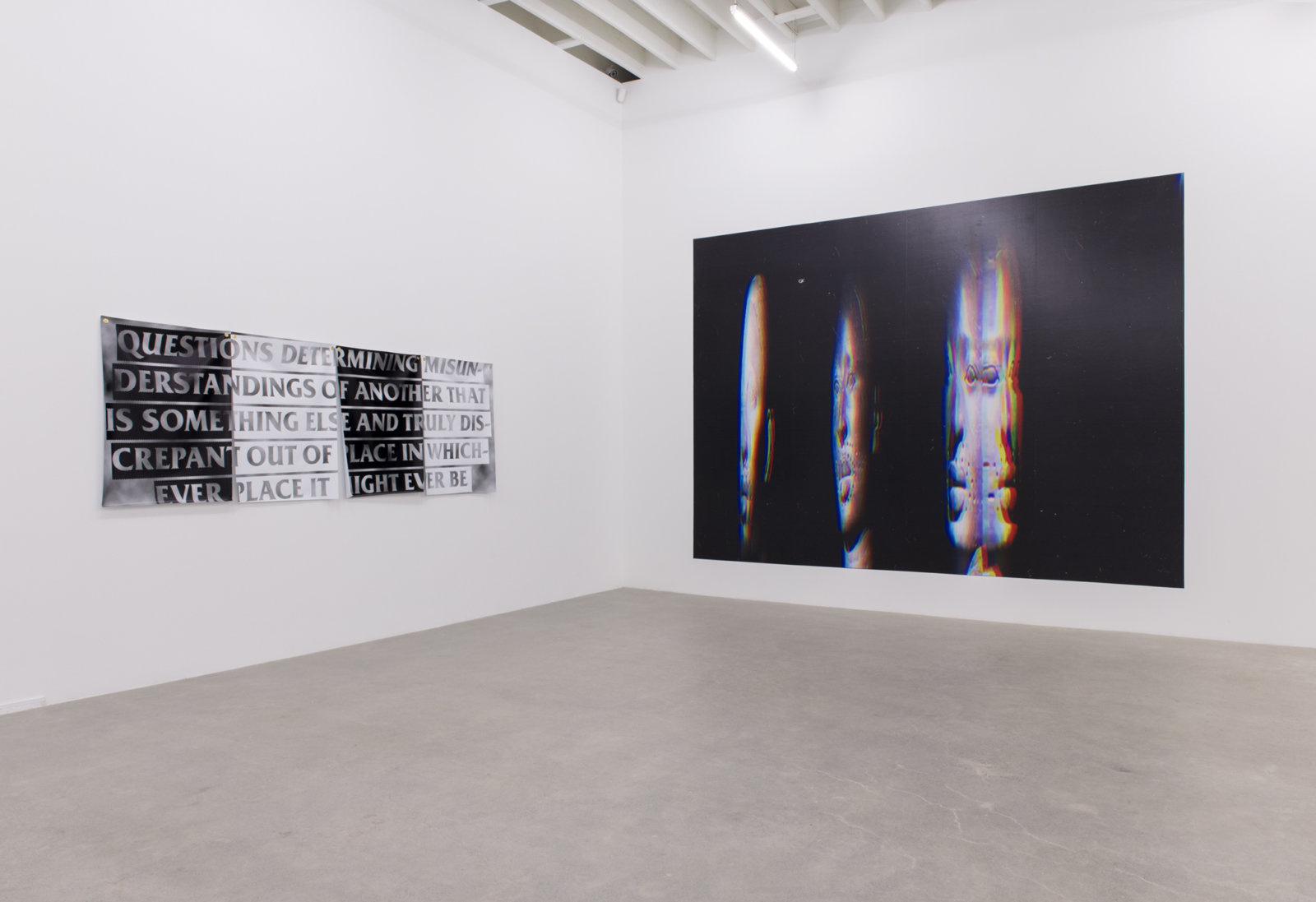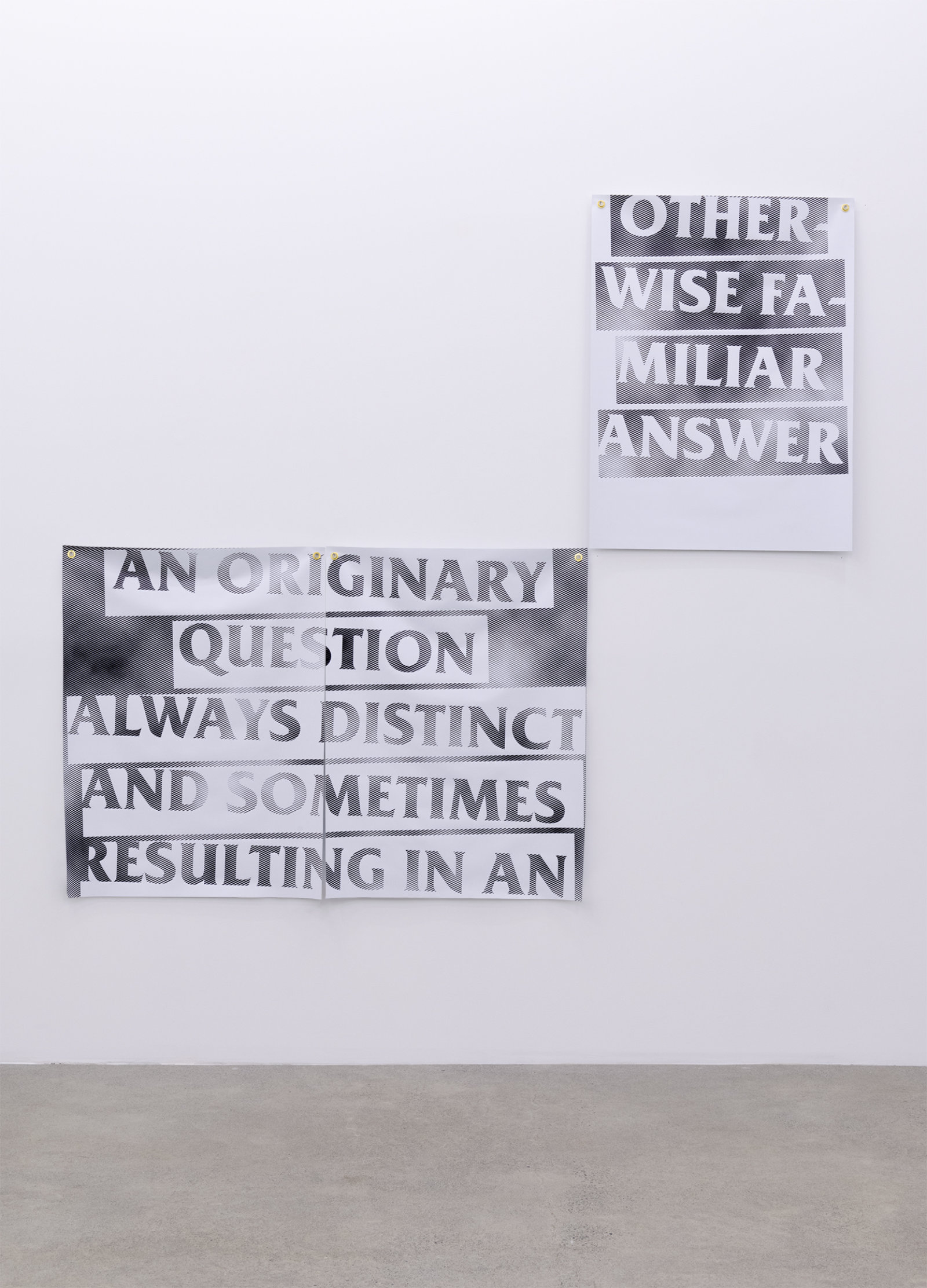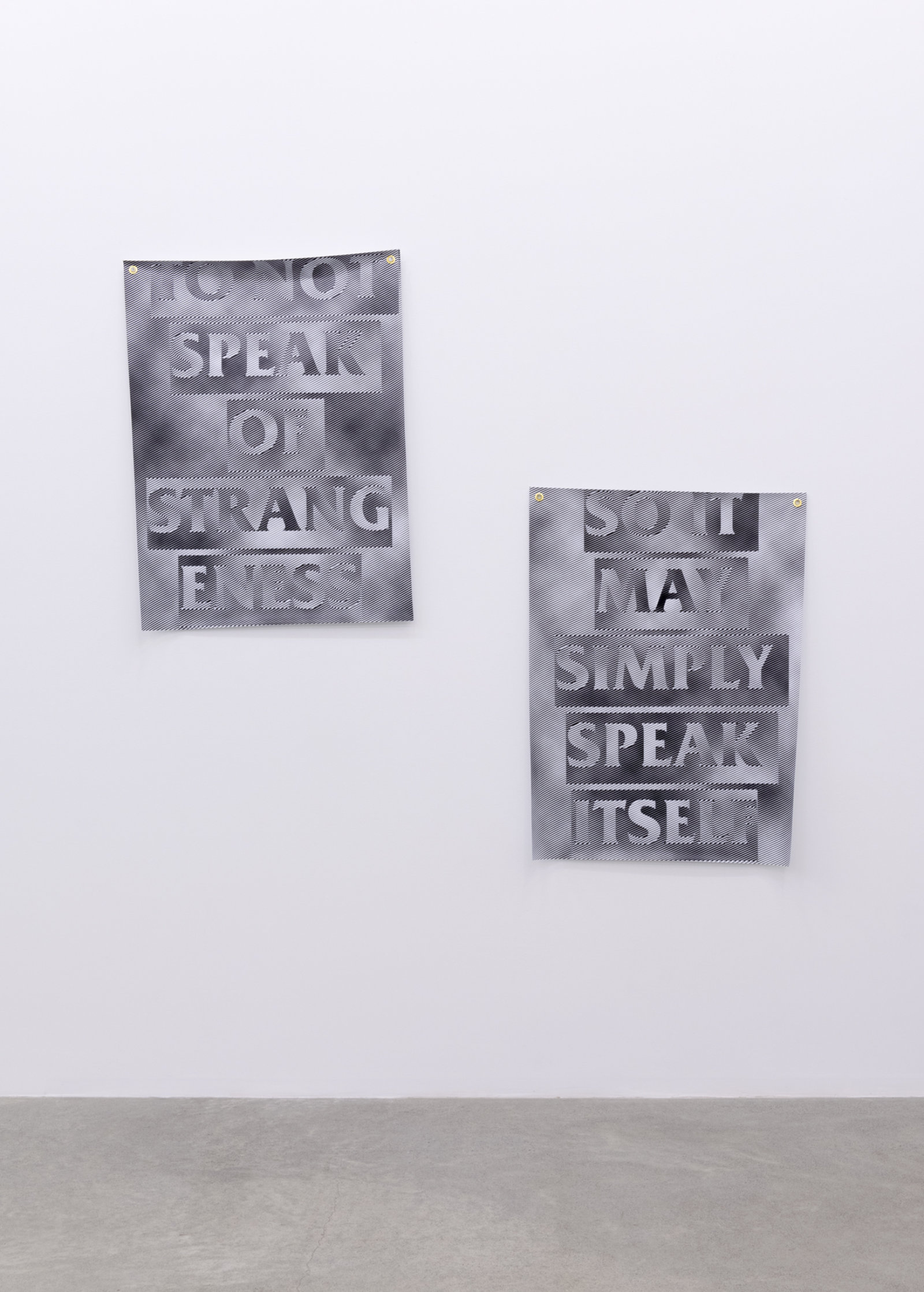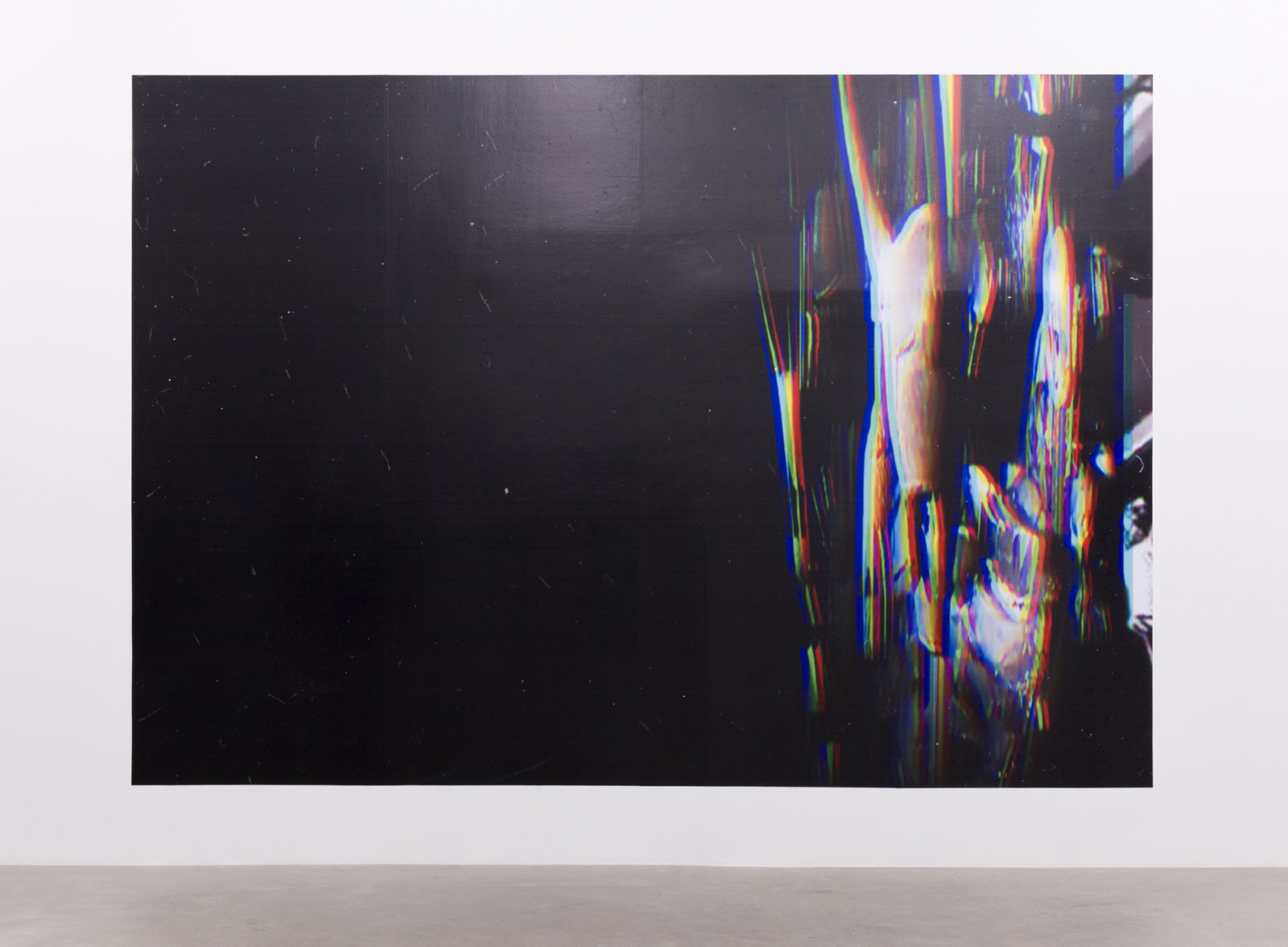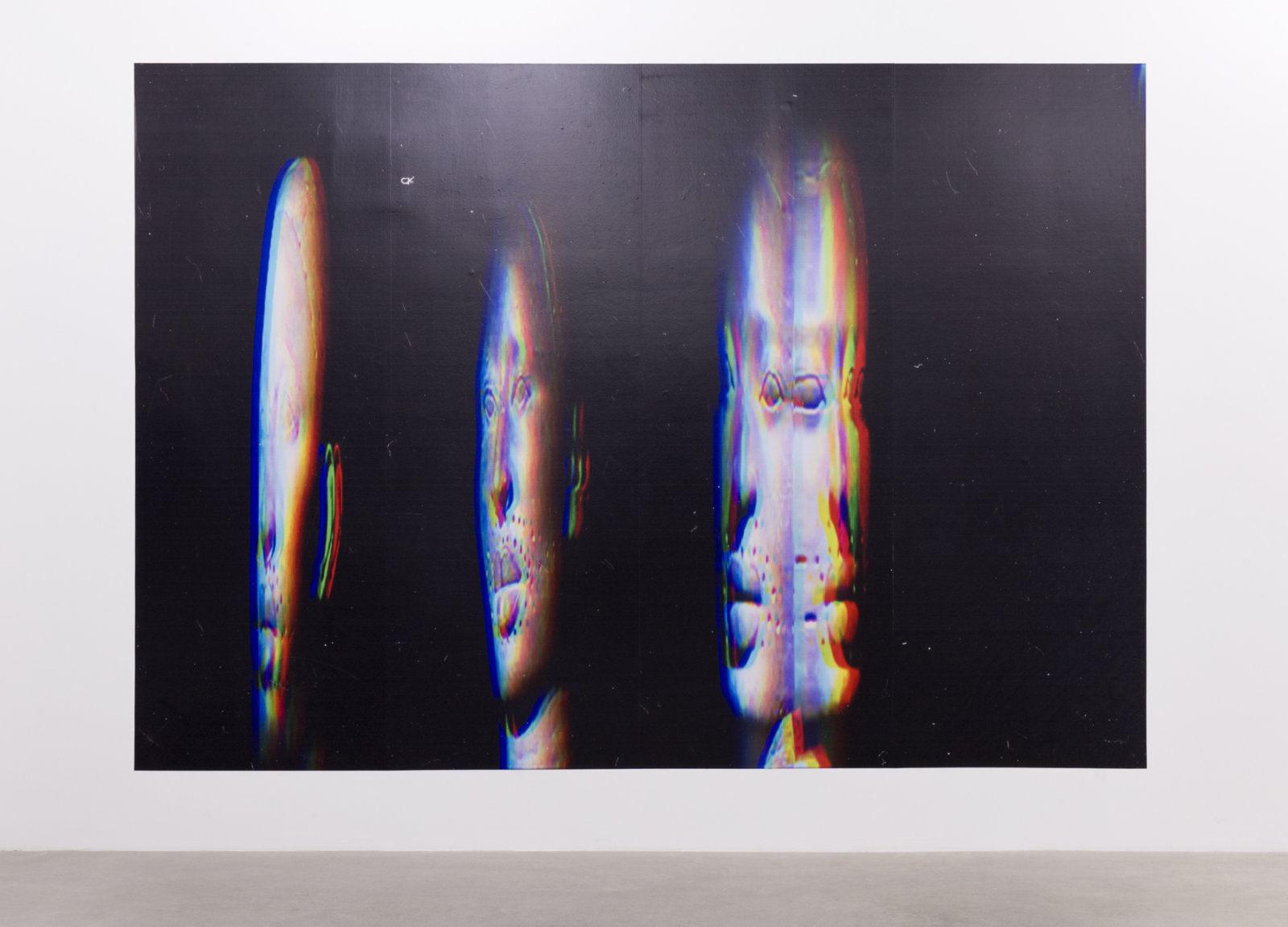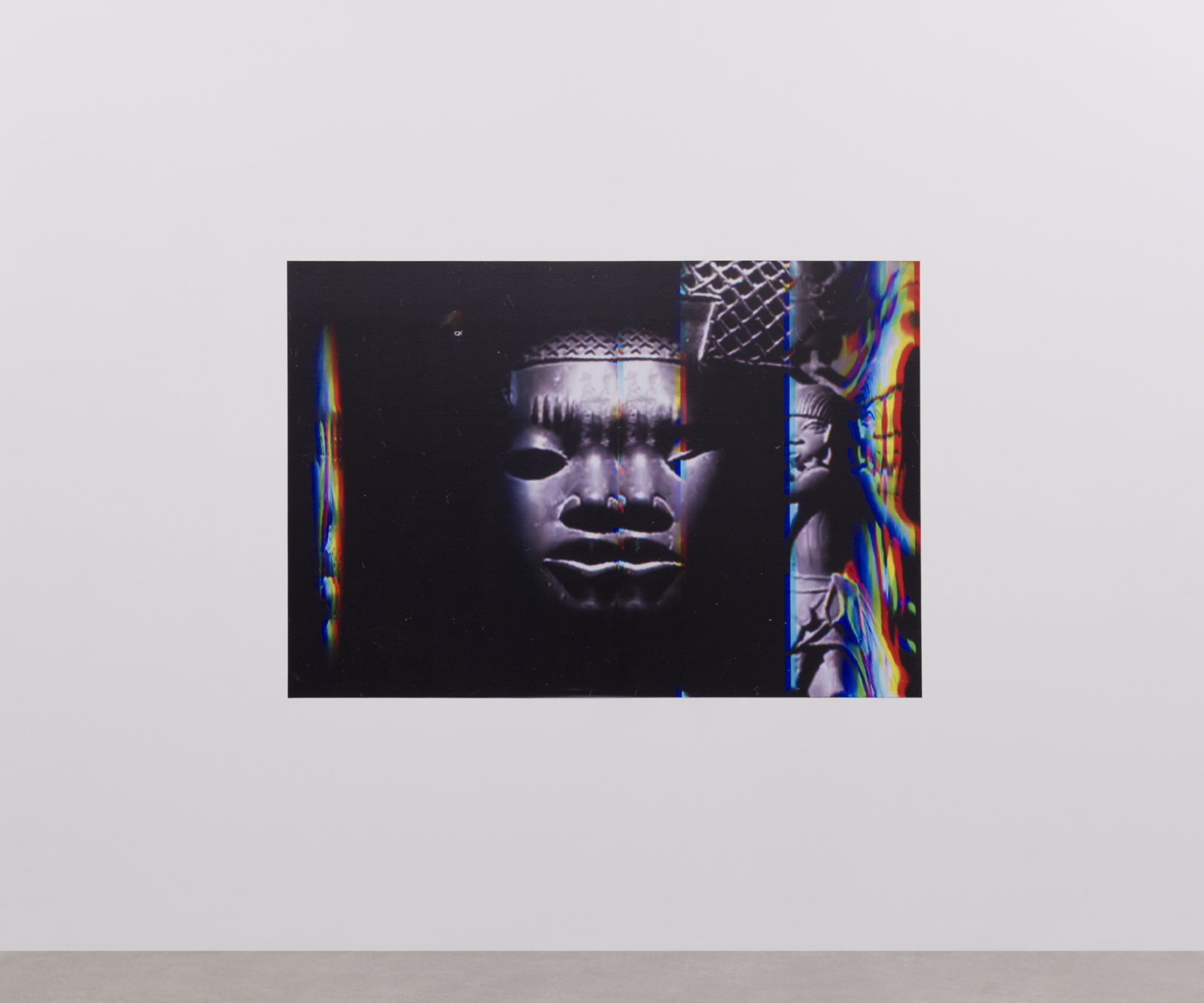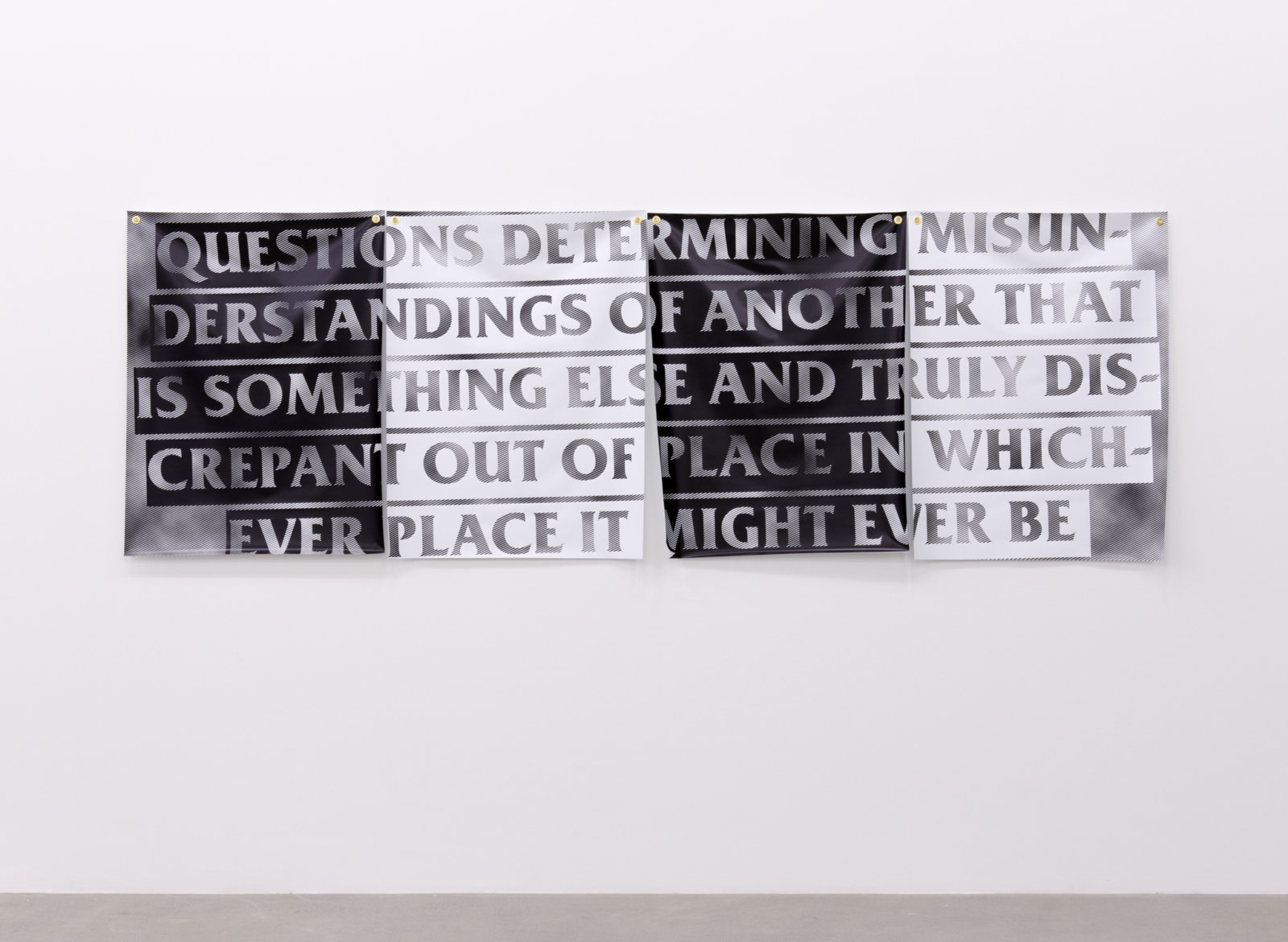Raymond Boisjoly – SEPTEMBER 16–OCTOBER 29, 2016
Raymond Boisjoly
September 16–October 29, 2016
Catriona Jeffries
Matter out of place and out of time. Raymond Boisjoly’s most recent body of work, ‘Discrepants’, circulates around textual figures of temporal and spatial displacements. It is presented together with the correlating series “From age to age, as its shape slowly unraveled…” and a related exterior artwork on the side of the gallery itself. This constellation of works considers ‘Statues Also Die’, a 1953 anti-colonial film by Chris Marker, Alain Resnais, and Ghislain Cloquet, which poetically articulates what occurs when we come to look at African statuary as simply aesthetic objects. Art is presented as a category convenient to western thinking through which immense things can be reduced to manageable dimensions.
Boisjoly’s interest in the film ‘Statues Also Die’ is in the way it mediates objects and focuses on how works by non-western peoples come to be understood as art. The work in the exhibition suggests the importance of looking at how this historical trajectory can be considered more broadly. From this general situation, and from his own specific position as an indigenous person, the artist considers that these same processes and transformations occur to the material of his own people. For historical example, totem poles of the Northwest Coast were cut down like trees and shipped to institutions all over the world, into a museological state they were never meant to be seen in.
Materially, all of the works in the exhibition use commercial consumer printing services rather than art printing. From inkjet ink on adhesive backed vinyl, to UV ink on flat vinyl with grommets, to exterior vinyl on aluminum frame. In order to foreground the existence of images culturally outside the bounded, if expanding realm of art, these printing methods concern the contingent character of art and its attendant practices.
For the project of “From age to age, as its shape slowly unraveled…”, Boisjoly began with a technique he has used previously, playing a video of the film on an iPhone, placing it on a scanner, which attempts to capture the image as it is moving, which of course is futile. This strategy creates strange, distorted, partial images that are outputted to large, adhesive inkjet on vinyl murals that are applied directly to the gallery walls. These create an alternate relationship to the exhibition space, in that they cannot be taken off the wall and moved around. To take them off the wall is to ultimately change them permanently. Instead of simply re-presenting historical images, this work draws attention to the method and time of its own altered transmission, implicating us in the creation of meaning in the present.
In this, there is an anxiety of the visual, the “thing” is never presented to you fully. While there are things that can be named in terms of recognizable imagery, there is obviously missing information. The text in the ‘Discrepants’ series functions as a kind of withholding, manifesting a differing anxiety about imagery. It uses ambiguous statements that are in effect reflections on the general premise of the printed images. They are an attempt to discuss, as opposed to leaving them as images or simply as pictures. They reflect the discursive aspect of the image, where the images cannot speak in that way, offering a different entry point to a shared concern. Surrounding the text, Boisjoly has incorporated images of clouds and television noise. As a complex aggregate, a cloud’s existence and form is determined as multiple parts coalesce, water droplets combining to form vapour, similar in structure to complex social and cultural phenomena. The artist asks us to consider the film as a model for discrepancy, how we can imagine the possibilities of difference, and the future of the discrepant.
Documentation by SITE Photography.
